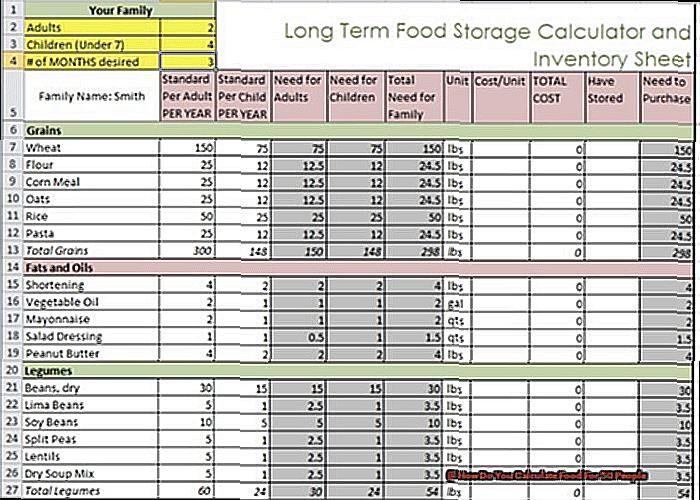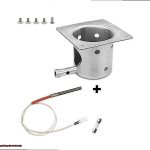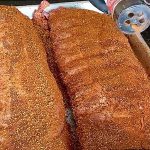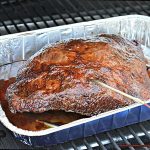Are you gearing up to host a big event and feeling overwhelmed about how much food you need to prepare for 50 people? Fret not, as calculating food for a crowd is not rocket science, but rather a matter of basic math skills and some careful planning. Whether it’s a wedding, birthday party, or family reunion that you’re organizing, getting the food right is crucial to the success of your event.
Did you know that on average, people consume three to four servings per meal? So if you’re feeding 50 guests, that means preparing at least 150-200 servings of food. But wait, there’s more. You also need to factor in the type of occasion, time of day, and any dietary restrictions your guests may have.
But don’t let all this stress you out. In this post, we’ll walk you through everything step-by-step on how to calculate food for 50 people. From mouth-watering appetizers to delectable desserts, we’ve got you covered with perfect portions and a comprehensive grocery list. With our help, you can avoid over or under-ordering and ensure your guests leave satisfied.
So whether it’s just a few hours or an entire day event that needs catering for 50 people – fear not. Armed with our knowledge and expertise in providing seamless and delicious food experiences for large crowds – we’ve got this covered. Let’s get started.
Contents
Step 1: Determine the Type of Event
When it comes to hosting an event, the first step is to determine the type of gathering you will be having. This step is crucial as it sets the foundation for your entire event, especially when planning food. Calculating food for 50 people can be overwhelming, but by answering these questions, you can simplify the process and host an unforgettable event.
The first question to consider is whether your event will be casual or formal. This will determine the level of formality in your menu and the types of foods that will be served. For a formal event, you may want to consider a sit-down dinner with multiple courses, while a casual gathering may suffice with finger foods and snacks.
Next, think about the time of day your event will take place. This consideration is essential because it affects what types of foods are appropriate. Breakfast events typically require lighter fare such as fruit and pastries, while lunch and dinner events tend to have more substantial meals.
Another factor to consider is whether alcohol will be served at your event and what type. This information is crucial in calculating the number of drinks needed per person and also affects the choice of food to serve.
The duration of your event also plays a significant role in determining how much food you need to provide. For longer events, you may need to offer additional snacks or meals.
Lastly, make sure to ask guests about any dietary restrictions or allergies they have before finalizing your menu. This information ensures that everyone can enjoy the meal and avoid any allergic reactions.
Step 2: Decide on the Menu
After determining the number of guests, the next step is to carefully consider the menu. The menu should be appropriate for the occasion and cater to the preferences of your guests. Let’s explore some key factors to keep in mind when planning a menu for 50 people.
Variety is Key
Offering a variety of options is essential to ensure that all guests are satisfied. Consider having a combination of vegetarian and meat-based options, as well as gluten-free and other dietary restriction-friendly dishes. This will ensure that everyone has something to enjoy.
Meal Service Style

When deciding on the type of meal service, both plated meals and buffet-style menus have their pros and cons. A plated meal ensures that everyone gets the same amount of food, creating a sense of uniformity.
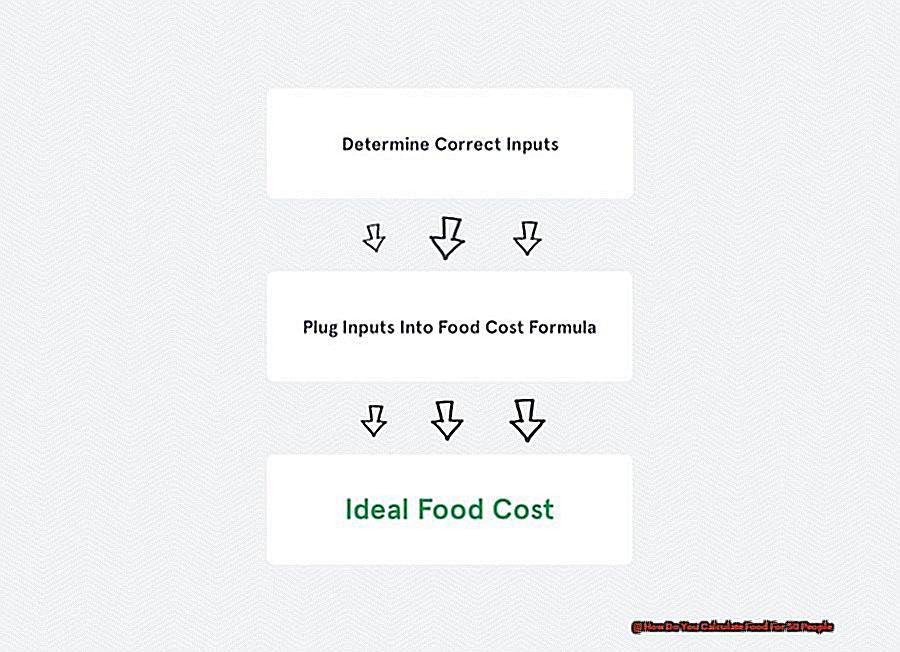
However, it may limit your guests’ options. A buffet-style menu offers more flexibility for guests to choose what they want to eat, but may result in longer wait times and more cleanup.
Cost and Preparation Time
It’s essential to consider the cost of ingredients when planning your menu, as this can quickly add up when cooking for a large group. Try using seasonal ingredients or opting for less expensive cuts of meat to save money without sacrificing flavor. Additionally, it’s crucial to choose dishes that can be prepared in advance and reheated before serving. This will save you time on the day of the event and ensure that all dishes are served at the same temperature.
Dietary Restrictions and Allergies
It’s important to consider any dietary restrictions or allergies your guests may have when planning your menu. Be sure to label any dishes that contain common allergens like nuts or dairy and offer alternative options for guests who are unable to consume certain foods.
Step 3: Estimate the Quantity of Food Needed
In the previous section, we talked about how planning a menu for 50 people is like conducting an orchestra. Today, let’s dive into the nitty-gritty of estimating the quantity of food needed for your event. As an expert in this field, I’ve put together some research notes to guide you through the process.
Firstly, it’s important to consider the type of event or occasion you’re planning. For instance, a cocktail party with light appetizers will require less food per person than a sit-down dinner with multiple courses. To estimate the quantity of food needed, let’s look at some key sub-topics:
Type of Event:
The type of event you’re hosting will determine how much food per person is needed. Consider whether it’s a buffet-style dinner, cocktail party or sit-down meal.
Time of Day and Duration:
The time of day and duration of your event also affect how much food per person is needed. If your event lasts several hours and falls during mealtime, plan for more food per person to ensure everyone is adequately fed.
Dietary Restrictions:
Make sure to consider any dietary restrictions or preferences of your guests, such as vegetarian or vegan options, gluten-free options or options for those with food allergies.
Plan for Approximately 1 Pound of Food Per Person:
A general rule of thumb is to plan for approximately 1 pound of food per person, including both main dishes and sides.
Sides:
When it comes to sides, aim for approximately 1/2 cup to 1 cup per person depending on the type of side dish. For instance, if you’re serving a pasta salad as a side dish, plan for approximately 1/2 cup per person. If you’re serving a vegetable side dish such as roasted carrots or green beans, plan for approximately 1 cup per person.
Desserts and Beverages:
Don’t forget about dessert and beverages. Plan for approximately 1-2 servings of dessert per person and provide a variety of beverage options such as water, soda, and alcoholic beverages (if appropriate for the occasion).
Step 4: Consider Serving Size
It’s crucial to make sure that you have enough food to feed all of your guests while also providing them with a delicious and satisfying meal. In this step, we will discuss how to calculate the appropriate serving size for your guests and why it’s essential to consider their needs and preferences.
Consider Your Guests’ Appetites
When deciding on the serving sizes for your dishes, it’s important to think about your guests’ appetites. While some may have a larger appetite, others may not be as hungry. Therefore, it’s best to plan for a variety of serving sizes to accommodate everyone. Additionally, if you’re hosting a casual gathering, larger serving sizes can encourage guests to mingle and enjoy themselves.
Use a Formula
To calculate the appropriate serving size for your guests, you can use a simple formula. Take into account the number of guests, the number of courses you will serve, and the type of event. As a general rule of thumb, plan for approximately 2-3 ounces of meat per person for a main course, along with 1-2 servings of vegetables and starches.
Don’t Forget About Appetizers and Snacks
When planning for appetizers and snacks, aim for about 3-4 bites per person per hour. This will ensure that your guests have enough to nibble on throughout the event without getting too full before the main course. Consider serving a variety of options to cater to different tastes and preferences.
Consider Dietary Restrictions and Preferences
It’s crucial to consider any dietary restrictions or preferences that your guests may have. Be sure to include plenty of plant-based options in your menu planning for vegetarian or vegan guests. If any of your guests have food allergies or sensitivities, label all dishes clearly and provide alternative options if necessary. This ensures that all guests can enjoy the meal without any worries.
Step 5: Consider Presentation and Layout
You may be wondering how to create an effective presentation and layout for your dishes. Fear not, as there are a few key steps you can take to ensure that your guests are impressed with the visual appeal of your food and can easily navigate your serving area.
First and foremost, you want your presentation to be visually appealing and easy for guests to navigate. Arrange your food in an organized and logical way, with clear labeling so that people know what they’re eating. A great way to do this is by grouping similar dishes together and labeling them with ingredients listed out for those with dietary restrictions.
The type of serving ware you use is also an important consideration. Depending on the type of food you’re serving, you may want to use different types of plates, platters, bowls or utensils to best showcase your dishes. For instance, if you’re serving finger foods such as sandwiches or appetizers, consider using smaller plates or trays that guests can easily hold. Alternatively, if you’re serving a salad or other type of mixed dish, you may want to use a large bowl or platter with tongs for easy serving.
In addition to considering the presentation of your food, it’s also important to think about the layout of your serving area. This includes factors such as the placement of tables, the flow of traffic through the space, and the accessibility of different dishes. Ideally, you want to create a layout that allows people to move through the space easily while still being able to access all of the food they want. Consider having separate areas or stations for different types of dishes such as a salad bar or dessert table.
To add an extra touch of pizzazz to your presentation, consider adding decorative elements such as flowers or themed decor. This can help create a cohesive aesthetic and make your guests feel special.
Tips for Planning a Successful Event
Organizing an event can be a daunting task, but with proper planning and organization, you can ensure that your event is a success. One of the most important aspects of any event is the food and beverage service. Here are five sub-sections to help you plan a successful event with the right amount of food and beverages.
Determine the Type of Event:
The first step in planning a successful event is to determine the type of event you’re hosting. This will help you decide on the menu and the amount of food needed. Is it a formal sit-down dinner or a casual buffet-style meal? Knowing the type of event will also help you decide on the time of day it should be held, which will impact the type of menu that should be served.
Cater to Dietary Restrictions:
It’s important to take into account any dietary restrictions or food allergies your guests may have. Providing options for guests who are vegetarian, vegan, gluten-free, or have other dietary restrictions will ensure that all guests are accommodated and satisfied. Be sure to communicate with your caterer about these options.
Use a Catering Calculator:
To calculate the amount of food needed for your event, use a catering calculator, which takes into account factors such as the length of the event, the time of day, and the type of food being served. This tool can be very helpful in ensuring that you have enough food for all your guests.
Plan for Leftovers:
Plan for leftovers by ordering slightly more food than what you think you’ll need. It’s always better to have too much food than not enough, so consider sending guests home with leftovers or donating them to a local shelter or food bank.
Provide Beverage Options:
Don’t forget about beverages. Plan on providing both alcoholic and non-alcoholic options for your guests. A general rule of thumb is to provide 2-3 drinks per person for a 4-hour event. Consider providing a variety of options, including water, soda, juice, beer, and wine.
Benefits of Properly Calculating Food for Events
No matter what kind of event you’re hosting, whether it’s a wedding, corporate event, or birthday party, providing enough food for all attendees can be a daunting task. This is where properly calculating the amount of food needed can make a huge difference and elevate your event planning game.
One of the most significant benefits of calculating food for events is cost savings. By determining the exact amount of food needed, there is less waste and overspending on unnecessary items. This allows for a more accurate budget and saves money in the long run. With this saved budget, you can utilize funds on other crucial aspects of your event, such as entertainment or decor.
Another benefit of properly calculating food is ensuring that all guests are well-fed. There is nothing worse than running out of food halfway through an event or not having enough options for guests with dietary restrictions. By taking the time to calculate the appropriate amount and variety of food, all guests can enjoy a satisfying meal. This leads to positive feedback from guests and increases attendance at future events.
In addition, proper food calculation can also help with logistics. Knowing how much food to order and what types of dishes to serve can streamline the ordering process and prevent last-minute chaos. It also ensures that there is enough space for storage and preparation of the food, making for a smoother event overall. This saves time and reduces stress for you and your team.
Finally, calculating food for events can also help with presentation. Planning out the menu ahead of time allows you to create a visually appealing display of food that adds to the overall ambiance of the event. This enhances the guest experience and adds to the event’s success. You can even incorporate themes or color schemes into your menu to create a cohesive and visually stunning display.
Common Mistakes to Avoid When Calculating Food for 50 People
It can be challenging to estimate the right amount of food, and making mistakes can lead to unhappy guests and unnecessary food waste. As an expert in event planning and catering, I’ve conducted thorough research on the most common mistakes people make when calculating food for 50 people. In this article, I will share my findings with you and provide tips on avoiding these errors.
Firstly, it’s crucial to consider individual dietary restrictions and preferences. Failure to do so can result in insufficient food options and unhappy guests. Be sure to inquire about any dietary restrictions your guests may have, such as allergies or vegetarian preferences. Providing a variety of dishes that cater to everyone’s dietary needs ensures that all of your guests are well-fed and satisfied.
Secondly, accounting for appetites is crucial when estimating portions. Some people may eat more than others depending on their activity levels and appetite. Overestimating portions can lead to excessive waste, while underestimating portions can result in hungry guests. We recommend estimating portions based on the average appetite of your guests to ensure everyone receives enough food without excess waste.
Lastly, serving style matters. Depending on the serving style you choose, you’ll need to adjust the amount of food accordingly. If you’re serving a buffet-style meal, provide enough food to allow each guest to serve themselves multiple times. On the other hand, if you’re serving a sit-down meal with plated servings, ensure that each guest has a sufficient portion size on their plate.
To summarize, when calculating food for 50 people, it’s essential to consider individual dietary restrictions and preferences, estimate portions based on average appetites, and adjust for serving style. By avoiding these common mistakes, you’ll provide your guests with a satisfying meal without any unnecessary waste or shortage of servings.
Conclusion
In conclusion, calculating food for a large group may seem daunting, but with some basic math skills and careful planning, you can ensure your event’s success. Whether it’s a wedding, birthday party or family reunion, getting the food right is crucial to keeping guests happy.
To start, determine the type of event you’ll be having as this sets the foundation for your menu. Next, consider factors such as variety, meal service style, dietary restrictions and allergies when selecting dishes. Don’t forget to factor in sides, desserts and beverages too.
Estimating food quantities is also important. Consider the duration of the event and time of day as well as guests’ appetites and dietary needs. Use a formula that takes into account serving style and individual preferences.
Presentation and layout are also crucial considerations when planning food for an event. Make sure your presentation is visually appealing and easy for guests to navigate while considering their preferences.
Properly calculating food for events has numerous benefits including cost savings, ensuring all guests are well-fed with satisfying meals that cater to individual dietary needs/preferences while enhancing logistics and presentation.
To avoid common mistakes when estimating portions for 50 people, consider individual dietary restrictions/preferences while estimating portions based on average appetites adjusted for serving style. By avoiding these common mistakes you’ll provide your guests with a satisfying meal without any unnecessary waste or shortage of servings.

